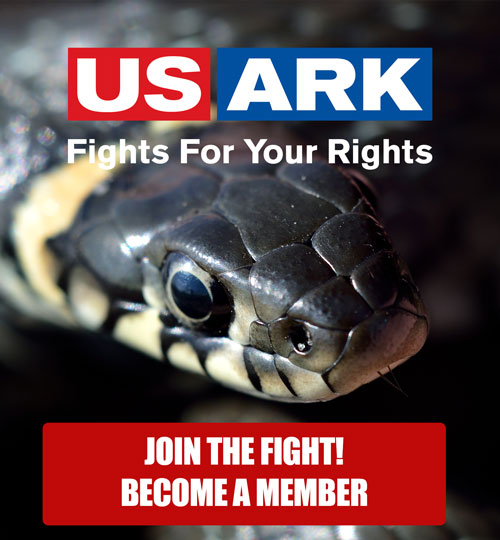
Best Management Practices – Public Safety
Occupational Hazard and Public Safety
There are two types of risk associated with livestock management – occupational risk and public safety risk. These are completely separate issues. In the case of the Reptile Industry, occupational hazard is the risk posed to those individuals who work with and around reptiles (not the innocent public). Public safety risk is that posed to the general public outside of the reptile keeper’s facility.
Unusually large specimens of the five largest snake species, venomous snakes and crocodilians do present a minimal occupational hazard to their keepers. However, by any objective measure, the risk is significantly less than that associated with other traditional livestock or pets. In recent years the Animal Rights (AR) Industry has waged an aggressive and sensational campaign to paint this occupational hazard as an eminent threat to public safety. This is a false claim, confusing occupational hazard and public safety.
The AR Industry has lobbied in a number of States to pass legislation that would designate many reptiles as “Dangerous”, seeking to ban private ownership. The reality is that there are many other types of livestock and pets that have been demonstrated, statistically and historically, to be much more dangerous to both keepers and to the public than any reptiles. Dogs and horses are responsible for dozens of deaths each year; while reptiles account for less than one. However, no proposal has been made to label other animals with the designation of “Dangerous”, even though annually they each injure and kill far more people than do any reptile species.
This is an example of the prejudice felt by segments of the public against reptiles. Some people are frightened of reptiles. There is no doubt that reptiles, particularly snakes, carry the baggage of cultural bias, irrational fear and misunderstanding. This is in spite of the fact that only about one person a year is killed in this country by a captive reptile as an occupational hazard, compared to, say, dozens a year that are killed by horses. No members of the general public have ever been killed by a captive reptile in the last 20+ years.
USARK rejects the designation of “Dangerous” to describe to any reptile. We understand that there are occupational hazards involved in the captive husbandry of the largest examples of five large snake species, and venomous reptiles. It is the position of USARK that only experienced and serious keepers should work with these animals. However, it is important to consider that there is no evidence to suggest that these risks are any greater than those associated with working with other traditional types of livestock or pets – indeed, the measurable risk is significantly less. USARK has developed voluntary Professional Best Management Practices that further mitigate any perceived risks in working with reptiles.
Studies done by the US Fish & Wildlife Service and US Geological Survey, suggest the rare fatality due to a captive reptile are occupational risk; and NOT a public safety risk. There is a minimal occupation risk taken when working with certain reptiles. Skill and care is required to safely handle them. It is an extremely rare event for a fatality to result. It is almost always the keeper or his employees or, even more rarely, a third party within the keepers facility. However, there has never been any measurable risk to the general public. Best Management Practices further mitigate public risk by implementing standards and putting additional safeguards in place.
Oppose – Legislation designating any reptiles as Dangerous or Inherently Dangerous; or banning the private ownership and trade in any reptiles based on unsubstantiated and false claims of public safety risk.
Cart
Make A Donation
If you would like to donate to the cause without a membership, use the donate button to do so.
Join Our Mailing List
Recent Posts
- ALERT: Arizona – Warrantless Animal Seizure
- ALERT: Colorado Pet Tax for ALL Animals
- South Carolina H4874
- ALERT: Washington Animal Program Ban
- ALERT: Florida Ban on All Iguanas
- ALERT: Louisiana Herp Regulation Overhaul
- Lacey Act amendments included in House report
- CITES Amphibian Trade Survey
- Gary Bagnall Resigns as Chairman of the Board
- ALERT: ESA listing for two reptile species and two others
- ESA Modernization Bills
- APHIS Nonnative Herp Environmental Assessment Comment Period
- ALERT: Ann Arbor, Michigan Animal Sales Ban
- ALERT: Austin, TX Animal Program Ban
- Lacey Act Amendments FAQ 2023
- ALERT: Lacey Act Amendments
- ALERT: Tennessee Regulation Changes
- FWC Comment Deadline!
- ALERT: Richmond, VA
- ALERT: Denison, Iowa

